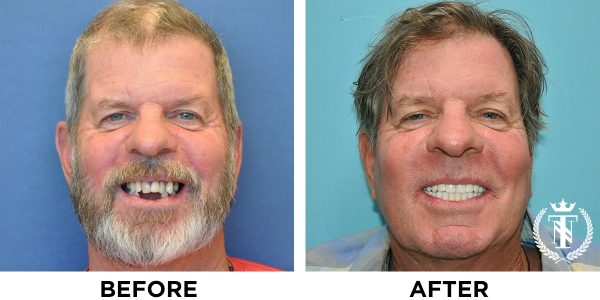The Latest Advances in Periodontal Treatments
Are you tired of traditional periodontal treatments that are time-consuming and invasive? Well, fear not, because the field of periodontics has witnessed some remarkable advancements that have revolutionized the way we approach gum disease.
From laser therapy to regenerative techniques, these cutting-edge methods offer a more effective and efficient way of restoring your oral health.
But that’s not all there are even more exciting developments on the horizon that will leave you eager to learn more.
So, buckle up and get ready to discover the latest breakthroughs in periodontal treatments that will leave you wondering why you didn’t explore them sooner.
Laser Therapy
Laser therapy is a cutting-edge periodontal treatment that offers precise and effective results in combating gum disease. If you’re looking for a treatment that can provide targeted and efficient results, laser therapy may be the solution for you.
With the use of a dental laser, your dentist can precisely remove infected gum tissue and bacteria, without causing damage to the healthy surrounding tissue. This targeted approach not only helps to eliminate the infection, but it also promotes faster healing and reduces the risk of complications.
One of the key advantages of laser therapy is its ability to minimize discomfort during the procedure. The laser provides a gentle and non-invasive treatment option, which means you may experience less pain and bleeding compared to traditional gum disease treatments. Additionally, laser therapy can also help to stimulate the regeneration of healthy gum tissue, promoting a more robust and resilient gum line.
Furthermore, laser therapy offers a shorter recovery time compared to other gum disease treatments. Since the procedure is minimally invasive, you can expect to experience minimal swelling and discomfort after the treatment. This means you can get back to your daily routine and enjoy a healthier smile in no time.
Regenerative Techniques
A more advanced approach to periodontal treatment is the utilization of regenerative techniques. These innovative methods focus on stimulating the body’s natural ability to regenerate and repair damaged periodontal tissues.
Here are three regenerative techniques that are making a significant impact in periodontal treatment:
1. Guided Tissue Regeneration (GTR): This technique involves the use of a barrier membrane to guide the growth of new bone and gum tissue. The membrane acts as a physical barrier, preventing the migration of undesirable cells and allowing the regeneration of healthy tissue.
2. Bone Grafting: In cases where bone loss has occurred due to periodontal disease, bone grafting is an effective technique. It involves placing bone graft material into the affected area, stimulating the growth of new bone tissue and restoring structural integrity.
3. Growth Factors: Growth factors, such as platelet-derived growth factor (PDGF) and bone morphogenetic proteins (BMPs), are bioactive substances that promote tissue regeneration. These growth factors can be applied directly to the affected area, enhancing the body’s natural healing processes.
Antibiotic Therapy
Antibiotic therapy plays a crucial role in the treatment of periodontal disease by targeting and eliminating the harmful bacteria that contribute to its progression. When you have periodontal disease, the bacteria in your mouth can form plaque and tartar, leading to inflammation and infection. Antibiotics work by either killing the bacteria directly or inhibiting their growth. They can be prescribed in different forms, such as pills, gels, or mouth rinses, depending on the severity of your condition. Antibiotics are often used in conjunction with other periodontal treatments to enhance their effectiveness.
There are different types of antibiotics that may be used for periodontal therapy. Some commonly prescribed antibiotics include tetracycline, metronidazole, and amoxicillin. These antibiotics are effective against a wide range of bacteria commonly found in the mouth. The choice of antibiotic will depend on the specific bacteria present in your mouth and your overall health.
It is important to note that antibiotics should be used judiciously and only when necessary. Overuse or misuse of antibiotics can lead to antibiotic resistance, where bacteria become resistant to the effects of the medication. This can make future infections more difficult to treat. Therefore, it’s crucial to follow your dentist’s or periodontist’s instructions when taking antibiotics and to complete the full course of treatment.
Minimally Invasive Procedures
One effective approach in the field of periodontal treatments is the use of minimally invasive procedures. These procedures aim to treat gum disease and improve oral health while minimizing discomfort and recovery time.
Here are three examples of minimally invasive procedures that are making a difference in periodontal treatments:
1. Laser therapy: Using a dental laser, this procedure targets and eliminates bacteria and infected tissue in the gums. The laser energy is precise and minimizes trauma to surrounding healthy tissue. Laser therapy promotes gum regeneration and reduces inflammation, leading to healthier gums and improved oral hygiene.
2. Scaling and root planing: This non-surgical procedure involves removing plaque and tartar from the tooth surface and smoothing the root surfaces. It’s often used to treat mild to moderate gum disease and can help prevent further progression of the disease. Scaling and root planing are performed with specialized instruments, and local anesthesia is used to ensure patient comfort.
3. Guided tissue regeneration: This technique involves placing a membrane between the gum tissue and the tooth root to encourage the growth of new tissue and bone. The membrane acts as a barrier, preventing the gum tissue from growing into the space where the bone should be. Guided tissue regeneration is commonly used in cases where bone loss has occurred due to periodontal disease.
Minimally invasive procedures offer patients a less invasive alternative to traditional surgical treatments, allowing for faster healing and a more comfortable experience. These advancements in periodontal treatments are revolutionizing the field and improving outcomes for patients.
Digital Imaging and Diagnostics
Now, let’s talk about the exciting advancements in digital imaging and diagnostics for periodontal treatments.
With high-resolution imaging technology, dentists can capture detailed images of your teeth and gums, allowing for enhanced diagnostic accuracy.
This means that potential issues can be detected earlier, leading to more effective and targeted treatment plans.
High-Resolution Imaging Technology
With the advancement of high-resolution imaging technology, dentists can now accurately diagnose and treat periodontal diseases more effectively. This cutting-edge technology provides detailed images of the oral cavity, allowing dentists to identify even the smallest signs of periodontal disease.
Here are three ways high-resolution imaging technology is revolutionizing periodontal treatments:
1. Enhanced clarity: High-resolution imaging captures images with exceptional clarity, enabling dentists to see the intricate details of the teeth and gums. This level of detail helps them identify early signs of gum disease, such as inflammation or pockets around the teeth.
2. Precise measurements: High-resolution imaging allows dentists to measure the depth of gum pockets accurately. This information is crucial in determining the severity of gum disease and planning appropriate treatment strategies.
3. Treatment planning: With high-resolution images, dentists can develop precise treatment plans tailored to each patient’s needs. They can visualize the extent of gum disease, assess bone loss, and identify any other dental issues that may impact the treatment process.
Enhanced Diagnostic Accuracy
High-resolution imaging technology not only enhances the clarity of dental images but also significantly improves diagnostic accuracy in periodontal treatments. With the advancements in digital imaging and diagnostics, dentists can now obtain detailed and precise images of the teeth and gums. This enables them to identify even the slightest signs of periodontal disease, such as bone loss, gum recession, and pocket formation.
By using digital imaging tools, dentists can accurately assess the extent of the disease and develop a more effective treatment plan tailored to the patient’s specific needs. Additionally, these high-resolution images allow for better communication between the dentist and the patient, as they can visually see and understand the condition of their oral health.
The enhanced diagnostic accuracy provided by digital imaging contributes to more successful periodontal treatments and improved patient outcomes.
Tissue Engineering
Tissue engineering has revolutionized periodontal treatments by providing innovative solutions for restoring damaged gum and bone tissues. This field combines biology, engineering, and materials science to create functional and living tissues that can repair and regenerate damaged areas in the mouth.
Here are three ways tissue engineering is transforming periodontal treatments:
1. Scaffold-based approaches: Tissue engineers use biocompatible scaffolds made from materials like collagen or synthetic polymers. These scaffolds act as a framework for cells to grow and organize into new tissues. By placing these scaffolds in the damaged areas, the body’s natural healing process is stimulated, leading to the regeneration of healthy gum and bone tissues.
2. Cell-based therapies: Tissue engineers can isolate and culture specific cell types, such as stem cells or periodontal ligament cells, in the lab. These cells can then be implanted into the damaged area to promote tissue regeneration. Stem cells, in particular, have the remarkable ability to differentiate into various cell types, making them ideal candidates for repairing and rebuilding damaged tissues.
3. Growth factors and gene therapies: Tissue engineers are also exploring the use of growth factors and gene therapies to enhance tissue regeneration. Growth factors are molecules that stimulate cell growth and proliferation, while gene therapies involve introducing specific genes into cells to promote desired tissue formation. These approaches hold great promise for accelerating the healing process and improving the outcomes of periodontal treatments.
With ongoing advancements in tissue engineering, the future of periodontal treatments looks bright. By harnessing the power of biology and technology, we’re finding new ways to restore damaged gum and bone tissues, improving the overall oral health and quality of life for patients.
Non-Surgical Periodontal Treatments
Non-surgical periodontal treatments offer effective alternatives to invasive procedures for treating gum disease. If you’re dealing with gum disease, these non-surgical treatments can help you avoid the discomfort and recovery time associated with surgery.
One popular non-surgical treatment is scaling and root planing. During this procedure, your dentist or dental hygienist will carefully remove plaque and tartar from your teeth and roots, smoothing the surfaces to prevent further buildup. This can help reduce inflammation and promote gum healing.
Another non-surgical option is antibiotic therapy. Your dentist may prescribe antibiotics, either in pill form or as a mouth rinse, to help eliminate bacteria causing the infection. This can be used in conjunction with scaling and root planing for even better results.
Laser therapy is also gaining popularity as a non-surgical treatment for gum disease. Using a dental laser, your dentist can remove infected tissue and promote gum reattachment. This can help reduce pocket depth and improve gum health.
Frequently Asked Questions
What Are the Potential Side Effects or Risks Associated With Laser Therapy for Periodontal Treatments?
When it comes to laser therapy for periodontal treatments, it’s important to be aware of potential side effects or risks. While this treatment is generally safe and effective, some common side effects may include minor discomfort, swelling, or sensitivity.
In rare cases, there may be a risk of infection or damage to surrounding tissues. It’s important to consult with your dentist or periodontist to discuss the potential risks and benefits of laser therapy for your specific situation.
Are Regenerative Techniques Suitable for All Patients With Periodontal Disease, or Are There Specific Criteria That Need to Be Met?
Regenerative techniques for periodontal disease may not be suitable for all patients. Specific criteria need to be met to ensure the effectiveness of these treatments. Factors such as the extent of the disease, overall oral health, and medical history play a role in determining the eligibility for regenerative techniques.
Your dentist will evaluate your condition and discuss the best treatment options for you. It’s important to have a thorough examination to determine the most suitable course of action.
How Long Does Antibiotic Therapy Typically Last for Periodontal Treatments, and Are There Any Long-Term Effects?
Antibiotic therapy for periodontal treatments typically lasts for a specific duration, which can vary depending on the severity of the condition. The length of the treatment is determined by your dentist or periodontist, who’ll consider factors such as the extent of the infection and your overall health.
While antibiotics can effectively combat periodontal disease, it’s important to follow the prescribed treatment plan and complete the full course of antibiotics.
As for long-term effects, it’s best to consult with your healthcare provider for personalized information.
Can Minimally Invasive Procedures Effectively Treat Advanced Cases of Periodontal Disease, or Are They More Suitable for Early-Stage Cases?
Minimally invasive procedures can effectively treat advanced cases of periodontal disease. They aren’t just suitable for early-stage cases. These procedures utilize advanced techniques that target and treat the disease at its source, promoting healing and preventing further damage.
What Are the Limitations or Drawbacks of Digital Imaging and Diagnostics in Accurately Diagnosing and Treating Periodontal Disease?
The limitations and drawbacks of digital imaging and diagnostics in accurately diagnosing and treating periodontal disease can be significant. While these technologies have advanced, they may still have difficulty capturing certain aspects of the disease, such as the depth of pockets or the extent of bone loss.
Additionally, there can be variability in interpretation, leading to potential misdiagnosis or ineffective treatment plans. It’s important to consider these limitations and use digital imaging as a tool, rather than relying solely on it for diagnosis and treatment decisions.
Conclusion
In conclusion, the field of periodontal treatments has seen significant advancements.
Laser therapy, regenerative techniques, and minimally invasive procedures offer effective and less invasive options for patients.
Antibiotic therapy continues to be a valuable tool in treating periodontal diseases.
Digital imaging and diagnostics have improved the accuracy of diagnosis and treatment planning.
Tissue engineering shows promise in regenerating damaged tissue.
Non-surgical periodontal treatments provide options for pat Visit Website ients who prefer non-invasive approaches.
These advancements have greatly improved the outcomes and patient experience in periodontal care.

Welcome to my website! I am Patrick Oxenham, a dedicated and passionate Pediatric Dentist with years of experience in providing comprehensive dental care for children. I am thrilled to share my knowledge and expertise in smile restoration methods, aesthetic dentistry updates, and gum health and grafting with you.

